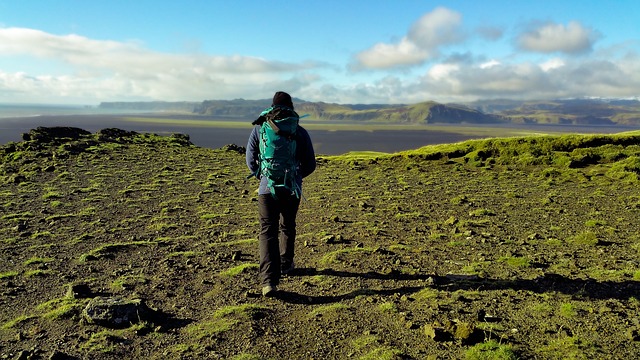When it comes to hiking, the weather can be unpredictable. You may plan for a sunny day, but end up getting caught in a downpour. As a result, it’s essential to ensure that your hiking gear is up to the task. One of the most critical pieces of equipment is your hiking backpack. A good backpack can make your hiking experience more comfortable, but are hiking backpacks waterproof?
Hiking backpacks can be either waterproof or water-resistant. Waterproof backpacks are designed to keep your gear dry in heavy rain, snow, or other wet conditions. They are made of waterproof materials like Gore-Tex, nylon, PVC, or PU-coated fabrics and have sealed zippers and seams that prevent water from seeping through.
In this ultimate guide, I will explore in detail whether hiking backpacks are waterproof, the different types of hiking backpacks, the materials used to make them waterproof, and the factors to consider when choosing a backpack. By the end of this post, you’ll have a better understanding of what to look for when choosing a waterproof hiking backpack. Let’s get to it!
What is a waterproof backpack?
A waterproof backpack is a type of backpack designed to keep your belongings dry in wet conditions. It is made of waterproof or water-resistant materials that prevent water from entering the backpack. Unlike water-resistant backpacks that can withstand light rain, waterproof backpacks can protect your gear in heavy rain, snow, or other wet conditions.
The backpack’s waterproof capabilities depend on the materials used, the construction, and the design of the backpack. Waterproof backpacks usually have sealed zippers and seams, which prevent water from seeping through. They are ideal for hikers who want to keep their gear dry and protected in wet environments.
Types of hiking backpacks
There are several types of hiking backpacks available in the market, each designed for specific purposes. Here are the most common types of hiking backpacks:
- Daypacks – These are small backpacks designed for day hikes. They usually have a capacity of 20-35 liters and can hold essentials like water, snacks, and extra clothing.
- Overnight backpacks – These are medium-sized backpacks designed for overnight trips. They usually have a capacity of 35-50 liters and can hold essentials like a sleeping bag, tent, and cooking gear.
- Backpacking packs – These are large backpacks designed for multi-day backpacking trips. They usually have a capacity of 50-80 liters and can hold all the gear you need for an extended trip.
- Hydration packs – These are small backpacks designed to carry a hydration bladder and some essentials like keys, phones, and snacks. They are ideal for short hikes where you need to stay hydrated.
The type of hiking backpack you choose will depend on the length of your trip, the amount of gear you need to carry, and your personal preferences.
Helpful Related Post: Find out what is the average hiking backpack weight and pack smart for your next trip!
Waterproof materials
There are several materials used to make hiking backpacks waterproof or water-resistant. Here are the most common materials used in waterproof backpacks:
- Gore-Tex – Gore-Tex is a breathable and waterproof material used in high-end backpacks. It is made of expanded polytetrafluoroethylene (ePTFE) and has microscopic pores that allow water vapor to escape while preventing water from entering the backpack.
- Nylon – Nylon is a durable and water-resistant material commonly used in backpacks. It is lightweight and can be coated with a waterproof coating to make it more water-resistant.
- PVC – PVC or Polyvinyl chloride is a waterproof material used in low-cost backpacks. It is affordable and waterproof but can be heavy and less breathable than other materials.
- PU-coated fabrics – PU-coated fabrics or Polyurethane-coated fabrics are water-resistant materials commonly used in backpacks. They are lightweight and can be coated with a waterproof coating to increase their waterproof capabilities.
The choice of material will depend on the backpack’s intended use, the level of waterproofing needed, and personal preferences. High-end backpacks tend to use Gore-Tex or other advanced materials, while low-cost backpacks may use PVC or other less expensive materials.
Factors to consider when choosing a waterproof hiking backpack
When choosing a waterproof hiking backpack, there are several factors to consider. Here are 6 of the most important ones:
- Capacity – The capacity of the backpack is an important factor to consider. You want to choose a backpack that is big enough to carry all your gear but not so big that it becomes uncomfortable to carry.
- Comfort – The backpack should be comfortable to wear for extended periods. Look for backpacks with padded shoulder straps and back panels, hip belts, and sternum straps. These features help distribute the weight of the backpack and prevent back pain.
- Durability – A good backpack should be durable and able to withstand the rigors of hiking. Look for backpacks made of high-quality materials and reinforced stitching.
- Price – The price of the backpack is an important factor to consider. Waterproof backpacks can range from affordable to expensive. Consider your budget and choose a backpack that offers the features you need at a price you can afford.
- Weight – The weight of the backpack is an important factor to consider, especially if you’re going on a long hike. Look for lightweight backpacks made of lightweight materials that won’t add unnecessary weight to your gear.
- Waterproofing – Finally, consider the level of waterproofing offered by the backpack. Look for backpacks with sealed zippers and seams, waterproof materials, and additional features like rain covers to ensure your gear stays dry.
Consider these factors when choosing a waterproof hiking backpack to ensure that you choose a backpack that meets your needs and preferences.
Tips for keeping your backpack dry
Keeping your backpack dry is crucial in wet conditions. Here are 6 tips to help keep your backpack and gear dry:
- Use a rain cover – A rain cover is a waterproof cover that goes over your backpack to protect it from rain. Most backpacks come with a rain cover, but you can also purchase them separately.
- Store items in waterproof containers – Store your gear in waterproof containers, like dry bags or Ziploc bags, to keep them dry. This is especially important for electronics like your phone or camera.
- Properly seal zippers and seams – Check the zippers and seams on your backpack to make sure they’re properly sealed. Use a seam sealer to seal any areas where water can seep through.
- Pack strategically – Pack your gear strategically to prevent water from seeping into the backpack. Store items you don’t need often at the bottom of the backpack and items you need frequently at the top.
- Choose a backpack with waterproof materials – Consider choosing a backpack made with waterproof materials like Gore-Tex or nylon coated with a waterproof coating.
- Dry your backpack after use – After your hike, dry your backpack completely before storing it. Hang it in a well-ventilated area or use a fan to speed up the drying process.
Conclusion
In conclusion, having a waterproof hiking backpack is essential for keeping your gear dry and protected in wet conditions. When choosing a waterproof hiking backpack, consider factors such as capacity, comfort, durability, price, weight, and waterproofing. Additionally, using a rain cover, storing items in waterproof containers, properly sealing zippers and seams, packing strategically, choosing a backpack with waterproof materials, and drying your backpack after use can help keep it dry in wet conditions.
With the right waterproof hiking backpack and these tips, you can enjoy your hiking adventures in all weather conditions. Remember to choose a backpack that fits your needs, and always be prepared for any weather conditions you might face on your hiking trip.










